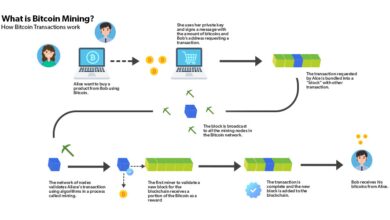
New Tech and Staffing Solutions Transforming Healthcare
New tech and staffing solutions that are transforming the healthcare industry – New tech and staffing solutions are transforming the healthcare industry, ushering in a new era of efficiency, accessibility, and personalized care. From telehealth platforms connecting patients with specialists across the globe to AI-powered diagnostics offering faster and more accurate diagnoses, technology is revolutionizing how we approach health and wellness.
This evolution extends beyond patient care, impacting the way healthcare organizations manage their workforce and navigate staffing shortages.
The rise of digital health technologies, such as wearable devices and remote patient monitoring, empowers individuals to take control of their health. Meanwhile, automation solutions like robotic process automation (RPA) are streamlining administrative tasks, freeing up healthcare professionals to focus on patient care.
As the industry grapples with staffing shortages, these innovative solutions offer a lifeline, enabling hospitals and clinics to optimize their workforce and provide high-quality care to a growing population.
The Rise of Digital Health Technologies
The healthcare industry is undergoing a digital transformation, with technology playing an increasingly crucial role in improving patient care, accessibility, and overall efficiency. This evolution, known as digital health, encompasses a wide range of technologies, from telehealth platforms to wearable devices and artificial intelligence, all converging to reshape the landscape of healthcare delivery.
Telehealth Platforms and Healthcare Accessibility
Telehealth platforms, which enable remote consultations and monitoring, have significantly improved healthcare accessibility, especially for individuals in underserved areas or with limited mobility. These platforms offer numerous benefits, including:
- Increased Access to Care:Telehealth bridges geographical barriers, connecting patients with specialists and healthcare services regardless of their location. This is particularly beneficial for individuals living in rural areas or those who find it challenging to travel for appointments.
- Reduced Wait Times:Telehealth consultations often have shorter wait times compared to traditional in-person appointments, allowing patients to receive timely care. This can be crucial for urgent or non-emergency conditions.
- Improved Patient Engagement:Telehealth platforms facilitate communication and collaboration between patients and healthcare providers, empowering patients to actively participate in their care. This can lead to better adherence to treatment plans and improved health outcomes.
Wearable Technology and Remote Patient Monitoring
Wearable technology, such as smartwatches and fitness trackers, has emerged as a powerful tool for remote patient monitoring and preventative care. These devices continuously collect physiological data, such as heart rate, sleep patterns, and activity levels, providing valuable insights into an individual’s health status.
- Early Disease Detection:Wearable technology can detect subtle changes in vital signs, potentially indicating the onset of health issues, allowing for early intervention and improved treatment outcomes. For example, wearable devices can monitor heart rate variability, which can be an early indicator of cardiovascular disease.
- Personalized Health Management:Wearable technology enables individuals to track their health metrics and make informed decisions about their lifestyle choices. This personalized approach to health management can lead to improved overall well-being and reduced healthcare costs.
- Chronic Disease Management:Wearable technology plays a crucial role in managing chronic conditions, such as diabetes and hypertension, by providing real-time data to healthcare providers and patients. This enables timely adjustments to treatment plans and improved disease control.
Emerging Technologies: AI-powered Diagnostics and Personalized Medicine
Artificial intelligence (AI) is rapidly transforming the healthcare industry, with applications ranging from disease diagnosis to drug discovery and personalized medicine. AI-powered diagnostic tools can analyze vast amounts of data, including medical images and patient records, to identify patterns and predict potential health risks.
- AI-powered Diagnostics:AI algorithms can analyze medical images, such as X-rays and CT scans, with high accuracy, assisting radiologists in identifying abnormalities and making diagnoses. This can improve the speed and accuracy of diagnosis, leading to faster treatment initiation and better patient outcomes.
- Personalized Medicine:AI is enabling the development of personalized medicine approaches, tailoring treatments to individual patients based on their genetic makeup, lifestyle, and other factors. This precision medicine approach has the potential to improve treatment effectiveness and minimize side effects.
Staffing Shortages and Automation Solutions

The healthcare industry is grappling with a persistent staffing shortage, impacting patient care, operational efficiency, and overall quality of service. This shortage is driven by factors such as an aging workforce, increasing demand for healthcare services, and burnout among healthcare professionals.
Automation solutions are emerging as a critical tool to address this challenge, offering a means to streamline processes, improve efficiency, and enhance the overall patient experience.
Robotic Process Automation (RPA) for Administrative Tasks
RPA involves using software robots to automate repetitive and rule-based tasks, freeing up human workers to focus on more complex and patient-centric activities. In healthcare, RPA is being implemented to streamline administrative processes such as:
- Patient registration and scheduling:RPA bots can automate the process of collecting and verifying patient information, scheduling appointments, and managing patient records. This reduces administrative burden on staff and improves efficiency in patient onboarding.
- Insurance claim processing:RPA can automate the process of collecting and verifying insurance information, submitting claims, and tracking claim status. This streamlines the billing process and reduces errors, leading to faster reimbursements and improved financial stability for healthcare providers.
- Data entry and reporting:RPA can automate the process of entering data into electronic health records (EHRs), generating reports, and analyzing data. This reduces the time and effort required for data management, freeing up staff to focus on patient care.
For instance, the Mayo Clinic uses RPA to automate tasks like appointment scheduling and insurance claim processing, leading to a 20% reduction in processing time and improved patient satisfaction.
AI-Powered Chatbots for Patient Support and Virtual Assistants
AI-powered chatbots are computer programs designed to simulate conversation with humans, providing instant support and assistance to patients. These chatbots can be integrated into websites, mobile apps, and messaging platforms, offering 24/7 availability and personalized interactions. In healthcare, chatbots are being used to:
- Answer frequently asked questions:Chatbots can provide instant answers to common patient queries, such as appointment scheduling, medication refills, and basic health information. This reduces the workload on healthcare staff and improves patient satisfaction.
- Provide symptom checking and triage:Some chatbots are equipped with AI algorithms that can analyze patient symptoms and provide preliminary diagnoses. This can help identify patients who require urgent medical attention and ensure timely intervention.
- Offer personalized health recommendations:AI chatbots can leverage patient data to provide personalized health recommendations, such as exercise routines, dietary plans, and medication reminders. This promotes patient engagement and improves adherence to treatment plans.
For example, Babylon Health, a digital healthcare platform, utilizes an AI-powered chatbot to provide virtual consultations, symptom checking, and medication management, enabling patients to access healthcare services remotely and conveniently.
The healthcare industry is undergoing a massive transformation with the rise of new technologies and staffing solutions. From AI-powered diagnostics to telehealth platforms, these innovations are revolutionizing how we access and receive care. However, the economic climate, as explored in this insightful article opinion will inflation worries push americans toward authoritarianism to economic detriment , could have a significant impact on the adoption and implementation of these solutions.
As we navigate the complexities of economic uncertainty, finding the right balance between technological advancement and economic stability will be crucial for ensuring a future where healthcare is accessible and affordable for all.
Optimizing Workforce Management
In the healthcare industry, where patient care is paramount, efficient workforce management is crucial. Optimizing staffing levels and ensuring the right skills are available at the right time is vital for delivering high-quality care while controlling costs. Workforce management software offers a powerful solution to this challenge, enabling healthcare organizations to streamline scheduling, improve resource allocation, and enhance operational efficiency.
Benefits of Workforce Management Software
Workforce management software provides a comprehensive suite of tools to optimize scheduling, staffing levels, and overall workforce efficiency. Here are some key benefits:
- Automated Scheduling:Software automates the scheduling process, taking into account factors like employee availability, skill sets, and patient demand. This eliminates manual scheduling errors and ensures optimal coverage across all shifts.
- Real-time Visibility:Real-time dashboards and reporting provide managers with a clear view of staffing levels, employee availability, and potential gaps. This allows for proactive adjustments to ensure adequate coverage and prevent staffing shortages.
- Improved Communication:Software facilitates communication between managers and employees, enabling efficient shift changes, leave requests, and other scheduling updates. This reduces confusion and improves employee satisfaction.
- Cost Optimization:By automating scheduling and optimizing staffing levels, organizations can reduce overtime costs, minimize agency staffing needs, and improve overall cost efficiency.
Traditional Staffing Models vs. Flexible Workforce Solutions
Traditional staffing models often rely on fixed schedules and full-time employees, which can lead to inefficiencies and difficulty in adapting to fluctuating patient demand. Flexible workforce solutions offer a more dynamic approach, utilizing a combination of full-time, part-time, and on-demand staff to meet changing needs.
The healthcare industry is undergoing a rapid transformation, driven by the rise of new technologies and innovative staffing solutions. From telehealth platforms to AI-powered diagnostics, these advancements are revolutionizing patient care and improving efficiency. But as we navigate these exciting developments, it’s essential to consider the broader political landscape, especially during consequential primary elections.
Three questions about today’s consequential primaries offer a crucial lens through which to evaluate the future of healthcare policy and its impact on the implementation of these transformative technologies.
| Feature | Traditional Staffing Models | Flexible Workforce Solutions |
|---|---|---|
| Staffing Approach | Fixed schedules, full-time employees | Combination of full-time, part-time, and on-demand staff |
| Flexibility | Limited flexibility to adjust to changing demand | High flexibility to meet fluctuating needs |
| Cost Efficiency | Potentially higher costs due to fixed salaries and overtime | Cost-effective by utilizing different staffing options |
| Employee Satisfaction | May lead to burnout due to fixed schedules | Offers greater work-life balance and flexibility |
Predicting Staffing Needs and Preventing Burnout
Data analytics plays a crucial role in optimizing workforce management. By analyzing historical data on patient volume, staff utilization, and other relevant factors, healthcare organizations can predict future staffing needs with greater accuracy. This allows for proactive staffing adjustments to ensure adequate coverage and prevent burnout.
“By analyzing historical data on patient volume, staff utilization, and other relevant factors, healthcare organizations can predict future staffing needs with greater accuracy.”
For example, a hospital might use data analytics to identify peak periods of patient admissions, such as during flu season. Based on this data, they can adjust staffing levels proactively, ensuring sufficient nurses and other healthcare professionals are available to handle the increased workload.
This proactive approach helps prevent burnout and ensures optimal patient care.
The healthcare industry is undergoing a massive transformation, thanks to new tech and staffing solutions that are making care more efficient and accessible. But with these changes come new challenges, and it’s important to maintain a positive outlook. Harvard researcher, Dr.
Researcher’s Name, suggests two simple mindset shifts that can prevent a midlife crisis, which are particularly relevant in today’s dynamic healthcare landscape. These changes, focusing on gratitude and purpose , can help us navigate the evolving world of healthcare with a sense of fulfillment and purpose.
Ultimately, embracing these changes can help us embrace the exciting possibilities of new tech and staffing solutions, rather than feeling overwhelmed by them.
Upskilling and Training for the Future
The healthcare industry is undergoing a rapid transformation, driven by the emergence of digital health technologies, staffing shortages, and the increasing adoption of automation solutions. To thrive in this dynamic landscape, healthcare professionals need to adapt and embrace new skills that will equip them to effectively leverage these advancements.
Essential Skills for Healthcare Professionals
The evolving healthcare landscape demands a new set of skills from healthcare professionals. These skills are crucial for navigating the complexities of digital health technologies, managing workforce challenges, and optimizing patient care in a data-driven environment.
- Data Analytics and Interpretation:The ability to collect, analyze, and interpret large datasets is becoming increasingly essential for healthcare professionals. Data analytics enables informed decision-making, personalized patient care, and efficient resource allocation.
- Digital Literacy and Technology Proficiency:Healthcare professionals need to be proficient in using various digital health tools and platforms, including electronic health records (EHRs), telehealth applications, and wearable technology. This proficiency ensures efficient workflows, improved patient communication, and enhanced access to patient data.
- Cybersecurity Awareness:With the increasing reliance on digital systems, healthcare professionals need to be aware of cybersecurity threats and best practices to protect sensitive patient data. This includes understanding data privacy regulations and implementing secure protocols for accessing and sharing patient information.
- Communication and Collaboration Skills:Effective communication and collaboration are critical for healthcare professionals working in multidisciplinary teams and interacting with patients from diverse backgrounds. This includes active listening, empathy, and the ability to explain complex medical information in a clear and concise manner.
- Critical Thinking and Problem-Solving:Healthcare professionals need to be adept at analyzing complex situations, identifying potential problems, and developing innovative solutions. This includes the ability to adapt to changing circumstances, evaluate new technologies, and make informed decisions based on available evidence.
Online Learning Platforms and Resources
To acquire the necessary skills and stay ahead of the curve, healthcare professionals have access to a wealth of online learning platforms and resources. These platforms offer flexible and convenient learning opportunities, allowing professionals to upskill and enhance their knowledge at their own pace.
- Coursera:A leading online learning platform offering a wide range of courses in healthcare, including data analytics, digital health, and healthcare management. Coursera partners with top universities and institutions worldwide, providing access to high-quality education from renowned experts.
- EdX:Another prominent online learning platform offering a diverse selection of courses and programs in healthcare, including topics like public health, medical technology, and healthcare policy. EdX collaborates with leading universities and organizations, delivering a comprehensive learning experience.
- Khan Academy:A non-profit organization providing free educational resources, including courses and tutorials on various subjects, including biology, chemistry, and health. Khan Academy offers a valuable resource for healthcare professionals seeking to enhance their foundational knowledge in key areas.
- American Medical Association (AMA):The AMA offers a variety of online resources for physicians, including continuing medical education (CME) courses, journals, and online communities. These resources provide valuable insights into the latest medical advancements, ethical considerations, and best practices.
- Healthcare Information and Management Systems Society (HIMSS):HIMSS offers online learning resources, including webinars, podcasts, and articles, focused on healthcare information technology and digital health. These resources provide valuable insights into the latest trends and technologies shaping the healthcare industry.
Importance of Continuous Learning and Professional Development, New tech and staffing solutions that are transforming the healthcare industry
The healthcare industry is constantly evolving, driven by technological advancements, changing patient needs, and emerging research. Continuous learning and professional development are essential for healthcare professionals to remain relevant and effective in this dynamic environment.
- Staying Ahead of Technological Advancements:The healthcare industry is rapidly adopting new technologies, from artificial intelligence and machine learning to wearable devices and telehealth platforms. Continuous learning allows healthcare professionals to stay abreast of these advancements, ensuring they can effectively integrate new technologies into their practice.
- Adapting to Changing Patient Needs:Patient expectations and needs are constantly evolving. Continuous learning enables healthcare professionals to understand these changes and adapt their practices accordingly. This includes understanding new patient demographics, emerging health concerns, and evolving preferences for healthcare delivery.
- Maintaining Professional Credibility:In many jurisdictions, healthcare professionals are required to complete continuing education credits to maintain their licenses. Continuous learning not only fulfills these requirements but also demonstrates a commitment to professional growth and staying current with the latest knowledge and skills.
- Enhancing Patient Care:By staying informed about the latest advancements in healthcare, professionals can provide better patient care. This includes understanding new diagnostic tools, treatment options, and preventive measures. Continuous learning empowers healthcare professionals to make informed decisions and deliver the highest quality of care.
Ethical Considerations and Future Trends: New Tech And Staffing Solutions That Are Transforming The Healthcare Industry
As healthcare embraces digital transformation, it’s crucial to address the ethical implications of emerging technologies, particularly in the realm of AI and data management. The potential benefits of these technologies are undeniable, but we must also acknowledge the potential risks and ensure responsible implementation.
AI in Healthcare: Navigating Ethical Challenges
The use of AI in healthcare presents both opportunities and ethical challenges. AI algorithms can analyze vast amounts of data to identify patterns and make predictions, potentially leading to more accurate diagnoses, personalized treatment plans, and improved patient outcomes.
However, the ethical implications of AI-driven healthcare solutions require careful consideration.
- Data Privacy and Security: AI algorithms rely on large datasets, raising concerns about patient privacy and data security. It’s crucial to ensure that data is collected, stored, and used ethically and securely, with robust measures in place to protect sensitive patient information.
This includes implementing strong encryption, access controls, and data anonymization techniques.
- Algorithmic Bias: AI algorithms are trained on data, and if that data reflects existing biases, the algorithms may perpetuate or even amplify those biases. This can lead to discriminatory outcomes, particularly for marginalized communities. It’s essential to develop AI systems that are fair, transparent, and unbiased, with rigorous testing and monitoring to mitigate the risk of bias.
- Transparency and Explainability: AI systems can be complex, making it challenging to understand how they arrive at their decisions. This lack of transparency can be problematic, especially in healthcare, where trust and accountability are paramount. Efforts are underway to develop more transparent and explainable AI systems, enabling healthcare providers to understand the reasoning behind AI-driven recommendations.
Blockchain: A Secure Future for Healthcare Data
Blockchain technology offers a decentralized and secure platform for managing healthcare data. Its immutable and transparent nature can enhance data integrity, security, and privacy. Blockchain can facilitate secure sharing of patient records between healthcare providers, reducing the risk of data breaches and improving interoperability.
- Secure Data Sharing: Blockchain can enable secure and transparent sharing of patient data among authorized parties, empowering patients to control their data and reducing the risk of unauthorized access. This can facilitate better coordination of care and improve patient outcomes.
- Enhanced Data Integrity: Blockchain’s immutable nature ensures that healthcare data is tamper-proof, reducing the risk of fraud and data manipulation. This can enhance trust in healthcare systems and improve data reliability.
- Improved Interoperability: Blockchain can facilitate seamless data exchange between different healthcare systems, eliminating the need for cumbersome and time-consuming manual processes. This can streamline workflows, reduce administrative burdens, and improve patient care.
Wrap-Up

The healthcare industry is on the cusp of a transformative era, driven by new technologies and innovative staffing solutions. The future of healthcare is one where patients are empowered, healthcare professionals are supported, and the industry operates with greater efficiency and effectiveness.
As we navigate this exciting landscape, it’s essential to embrace the potential of these advancements while addressing ethical considerations and ensuring equitable access to these transformative solutions.






